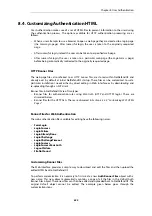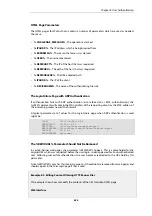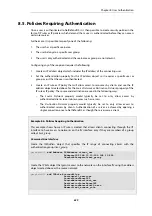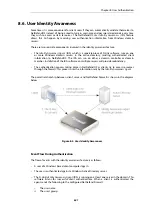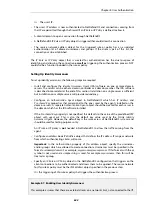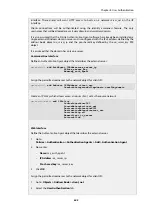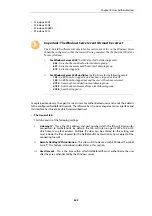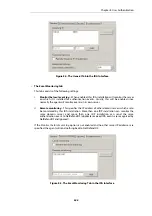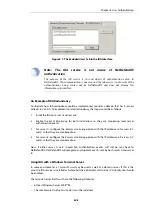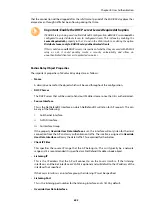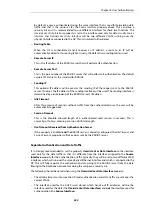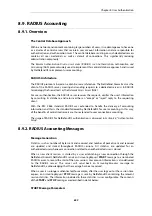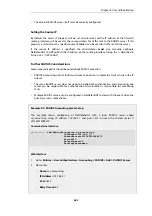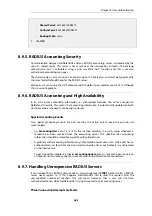
Figure 8.7. The Excluded Users Tab in the IDA Interface
Note:
The
IDA
service
is
not
aware
of
NetDefendOS
authentication
The purpose of the IDA service is to send details of authentication events to
NetDefendOS. This communication is one way and the IDA service is not aware of the
authentications being carried out by NetDefendOS and does not display this
information in its interface.
An Example of IDA Redundancy
To illustrate how IDA redundancy could be implemented, consider a domain that has 4 servers
called
A, B, C
and
D
. To implement minimal redundancy, the steps would be as follows:
1.
Install the IDA on server
A
and server
B
.
2.
Enable the
Event Monitoring
for both installations so they are monitoring local server
authentication events.
3.
For server
A
, configure the
Remote monitoring
option with the IP addresses of servers
B, C
and
D
so that they are monitored too.
4.
For server
B
, configure the
Remote monitoring
option with the IP addresses of servers
A, C
and
D
so that they are monitored too.
Now, if either server
A
or
B
should fail, authentication events will still be sent back to
NetDefendOS. NetDefendOS will recognize any duplicate events sent by both server
A
and server
B
.
Using IDA with a Windows Terminal Server
In some environments, a
Terminal Server
may be used as well as a domain server. If this is the
case, the IDA service is installed as before but the option
Remote Desktop IP Virtualization
should
be enabled.
The terminal server itself must have the following attributes:
•
At least Windows Server 2008™ R2.
•
The role
Remote Desktop Session Host
must be installed.
Chapter 8: User Authentication
648
Summary of Contents for NetDefendOS
Page 30: ...Figure 1 3 Packet Flow Schematic Part III Chapter 1 NetDefendOS Overview 30 ...
Page 32: ...Chapter 1 NetDefendOS Overview 32 ...
Page 144: ...Chapter 2 Management and Maintenance 144 ...
Page 284: ...Chapter 3 Fundamentals 284 ...
Page 392: ...Chapter 4 Routing 392 ...
Page 419: ... Host 2001 DB8 1 MAC 00 90 12 13 14 15 5 Click OK Chapter 5 DHCP Services 419 ...
Page 420: ...Chapter 5 DHCP Services 420 ...
Page 573: ...Chapter 6 Security Mechanisms 573 ...
Page 607: ...Chapter 7 Address Translation 607 ...
Page 666: ...Chapter 8 User Authentication 666 ...
Page 775: ...Chapter 9 VPN 775 ...
Page 819: ...Chapter 10 Traffic Management 819 ...
Page 842: ...Chapter 11 High Availability 842 ...
Page 866: ...Default Enabled Chapter 13 Advanced Settings 866 ...
Page 879: ...Chapter 13 Advanced Settings 879 ...


